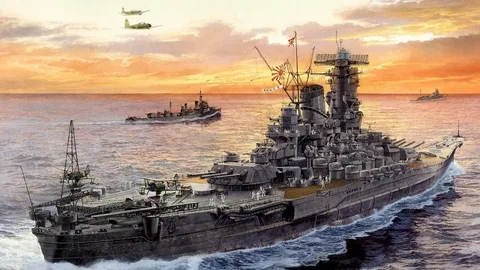World War II left behind a legacy that remains etched in history, from the valor of its heroes to the ruins of its battlegrounds. One of the most intriguing remnants of this era lies beneath the waves: underwater Japanese ships from World War II. These submerged relics offer a glimpse into a pivotal moment in history, serving as both historical artifacts and underwater wonders. At Dailyscope, we dive deep into the stories behind these sunken ships and their significance.
January 10, 1945 in Lingayen Gulf a Japanese suicide boat exploded against USS LCI(G)-365 causing damage with a few wounded. The damaged Landing Craft Infantry was written off.https://t.co/416QAxZJTH#worldwarii #worldwar2 #PacificWar #WWII #WW2 #Philippines #Luzon #80th
— Pacific Wrecks (@PacificWrecks) January 11, 2025
The Legacy of Sunken Japanese Ships
The waters of the Pacific are home to countless wrecks of Japanese vessels, many of which met their fates during the fierce naval battles of World War II. These ships include:
- Battleships: Once the pride of the Imperial Japanese Navy, many battleships now rest at the ocean floor.
- Aircraft Carriers: Key players in battles like Pearl Harbor and Midway, their wrecks are poignant reminders of the war.
- Transport Ships: These vessels carried troops, weapons, and supplies and were often targeted by Allied forces.
Famous Underwater Japanese Shipwrecks
- The USS Arizona and Japanese Ships at Pearl Harbor: The attack on Pearl Harbor marked the entry of the United States into World War II. While the USS Arizona’s remains are well-known, Japanese midget submarines sunk during the attack also offer a unique perspective.
- The Truk Lagoon (Chuuk Lagoon): Often called the “Ghost Fleet,” this site in Micronesia is a graveyard of over 50 Japanese ships and aircraft, sunk during Operation Hailstone in 1944. Today, it’s a world-renowned diving destination.
- The Battleship Musashi: One of the largest battleships ever built, Musashi was sunk in the Sibuyan Sea in 1944. Its wreck was discovered in 2015 and remains a significant historical find.
- The Katori-Class Light Cruiser: This shipwreck near Kwajalein Atoll provides insight into Japan’s naval strategy and technology during the war.
The Historical and Cultural Significance
The underwater remains of these ships are more than just wrecks; they are time capsules that:
- Preserve History: These vessels reveal details about naval engineering, wartime tactics, and the lives of those who served aboard.
- Honor Sacrifices: Sunken ships are often considered war graves, a somber reminder of the human cost of conflict.
- Foster Exploration: These sites attract historians, archaeologists, and divers eager to uncover their secrets.
Exploring the Underwater Relics
For those interested in exploring these underwater marvels, here are a few tips:
- Research Diving Locations: Areas like Truk Lagoon and the Philippines are hotspots for WWII shipwrecks.
- Seek Expert Guidance: Diving to shipwrecks requires advanced skills and knowledge of local regulations.
- Respect the Sites: Many shipwrecks are protected as historical landmarks or war graves.
Dive Deeper with Dailyscope
At Dailyscope, we’re passionate about bringing history to life. Whether you’re a history buff or an adventurer, the underwater Japanese ships of World War II provide a fascinating journey into the past. Stay tuned for more articles that uncover the stories behind historical sites and artifacts.
Have you explored any WWII shipwrecks? Share your experiences in the comments and inspire others to dive into history.


1 Comment
I am extremely impressed with your writing skills as well as with the format in your weblog. Is that this a paid subject matter or did you modify it your self? Anyway stay up the excellent quality writing, it is uncommon to peer a great blog like this one nowadays!